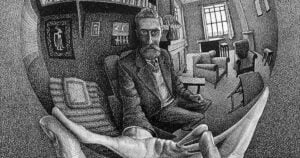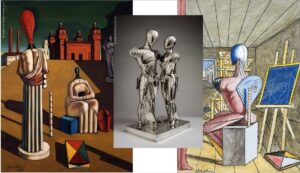[box type=”note” ]
The Baroque Underworld
Vice and Destitution in Rome
The French Academy in Rome – Villa Medici
Grandes Galeries, 7 October 2014 – 18 January 2015
Curators : Annick Lemoine and Francesca Cappelletti
Opening hours: Tuesday to Sunday (closed on Mondays) 11:00 a.m. to 7:00 p.m. (last
admission 6:30 p.m.).
Tickets for the exhibition and guided tours of Villa Medici and its gardens: € 12 (full
price) / € 6 (reduced price *).
* Reduced price: under 25s, over 60s, unemployed on presentation of proof, history of art teachers, residents and
members of other academies and foreign institutions with headquarters in Rome, holders of a student card, Roma
Pass Card, Metrobus, Carta più La Feltrinelli, Bibliocard Romaeuropa card or Opera Card.
[/box]
[googlemap src=”https://maps.google.it/maps?q=Villa+Medici,+Viale+Trinit%C3%A0+dei+Monti&hl=it&ie=UTF8&ll=41.909068,12.482593&spn=0.003484,0.005761&sll=41.90893,12.482813&sspn=0.003484,0.005761&t=h&gl=it&z=18&iwloc=A” width=”700″ ]
The French Academy in Rome – Villa Medici will present the exhibition The Baroque Underworld. Vice and Destitution in Rome, in the Grandes Galeries from 7 October 2014 to 18 January 2015. Curators are Francesca Cappelletti, professor of history of modern art at the University of Ferrara and Annick Lemoine, officer in charge of the Art history Department at the French Academy in Rome, lecturer at the
University of Rennes 2. The exhibition has been conceived and organized within the framework of a collaboration between the French Academy in Rome – Villa Medici and the Petit Palais, Musée des Beaux-Arts de la Ville de Paris, where it will be shown from 24 February to 24 May 2015.

The Baroque Underworld reveals the insolent dark side of Baroque Rome, its slums, taverns, places of perdition. An “upside down Rome”, tormented by vice, destitution, all sorts of excesses that underlie an amazing artistic production, all of which left their mark of paradoxes and inventions destined to subvert the established order. This is the first exhibition to present this neglected aspect of artistic creation at
the time of Caravaggio and Claude Lorrain’s Roman period, unveiling the clandestine face of the Papacy’s capital, which was both sumptuous and virtuosic, as well as the dark side of the artists who lived there.
Seicento Rome was the most lively cultural center of Europe, with a vibrant avant-garde which attracted artists from all over Europe. Many were the Italians, French, Dutch, Flemish, and Spanish who settled and made their careers in the Capital of art. In contact with this “splendid and miserable city”, as Pasolini called, they gambled with the visual codes and standards of beauty, measuring themselves against the
universe of slums and dangers of nightlife, the Carnival and its licentiousness. This milieu which was both burlesque and poetic, vulgar and violent, became, for some, a central theme, and for others, an experience of life.
The exhibition features over fifty works of art created in Rome during the first half of the XVIIth century by artists from all over Europe, including Claude Lorrain, Valentin de Boulogne, Jan Miel, Sébastien Bourdon, Leonaert Bramer, Bartolomeo Manfredi, Jusepe de Ribera, or Pieter van Laer. In the Grandes Galeries, the
public will discover the works of the greatest Caravaggesque painters, the major Italianate landscape artists and the Bamboccianti, painters of the bambocciate, who heralded the representation of ordinary life in Rome and the surrounding countryside. Paintings, drawings, prints from major European museums, as well as works from private collections, rarely exhibited to the public.
The itinerary through the exhibition will lead the public from bacchanalian intoxication to melancholy, through an exploration of the underworld in Seicento Rome, punctuated by views of the Roman urban and pastoral landscapes, desecrated by dissonant, burlesque or scatological details of the Eternal city inhabited by beggars, prostitutes, transvestites, vagabonds and brigands.
Attentive to daily rituals, while referring to stereotypical visions of social reality, these works deploy a panoply of the vices and excesses of the underworld, related to practices such as alcohol, tobacco, gambling and the pleasures of Venus, dangerous causes of loss of reason, which were condemned at the time. These artists often represented themselves in the context of perdition, playing on the ambiguity between reality and fiction: the roots of the mythical bohemian artist are already present in their works.
At the origin of this artistic production and in the Caravaggio lineage are the inventions of an entire international community of artists who had settled in the area surrounding Villa Medici, between the districts of Santa Maria del Popolo, Sant’Andrea delle Fratte and San Lorenzo in Lucina. Many were under the patronage of Bentvueghels (the “Birds of the band”), the association of northern European painters united in Rome under the ‘guardianship’ of Bacchus, god of wine and artistic inspiration: Caravagesques, Bamboccianti or Italianate landscape painters, all of whom were the turbulent protagonists of life in the taverns.
The exhibition does not confine itself to a movement or a particular school of art, nor to the question of the Seicento genre; rather it explores the themes, characters and daily vicissitudes present in the arts during the early decades of the XVIIth century in painting, but also in music and literature, with the picaresque novel, and the Commedia dell’arte in the theater.

The Baroque Underworld Vice and Destitution in Rome | 7 October 2014 – 18 January 2015
More from NewsMore posts in News »

